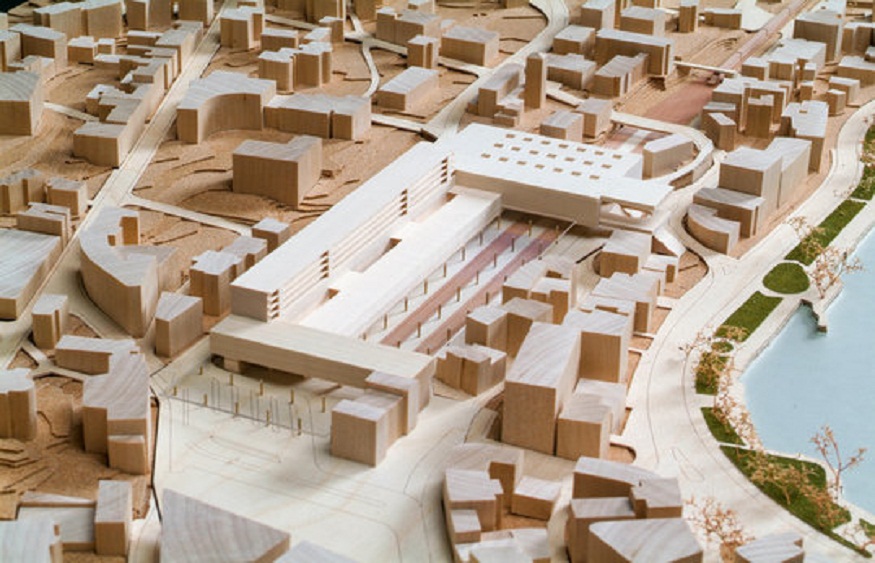Architectural Model Presentation

In the realm of architecture, where blueprints and digital renderings often fall short in conveying the true essence of a design, architectural model presentation emerges as a powerful tool. It transforms abstract concepts into tangible, three-dimensional representations that captivate the imagination and facilitate effective communication. At the heart of this process lies architectural model visualization, a meticulous art that bridges the gap between design intent and public perception.
The Significance of Architectural Models
Architectural models serve as indispensable assets throughout the design and development lifecycle. From initial concept exploration to client presentations and construction planning, these physical representations offer a wealth of benefits. They enable architects to refine their designs, identify potential challenges, and make informed decisions. For clients, models provide a tangible means to visualize and understand the proposed project, fostering engagement and buy-in. Moreover, models are invaluable tools for marketing and sales, as they create a lasting impression and generate excitement for future developments.
The Role of Architectural Model Visualization
Architectural model visualization is the process of creating visually compelling and informative models that accurately reflect the architect’s vision. It involves a combination of artistic skill, technical expertise, and a deep understanding of architectural principles. Model makers meticulously craft each element, from the building’s exterior and interior spaces to surrounding landscapes and infrastructure. The goal is to create a miniature world that is both aesthetically pleasing and functionally accurate.
Advancements in technology have significantly enhanced the capabilities of architectural model visualization. Computer-aided design (CAD) software allows for precise modeling and analysis, while 3D printing has revolutionized the production process. These tools enable architects to experiment with different design iterations, explore various materials and finishes, and create highly detailed models with unprecedented speed and efficiency.
The Power of 3D Printing in Architectural Model Making
3D printing has emerged as a game-changer in the field of architectural model making. By converting digital designs into physical objects layer by layer, this technology offers unparalleled precision, complexity, and customization. Architects can now produce intricate details, such as architectural ornamentation, landscaping elements, and even human figures, with remarkable accuracy.
Moreover, 3D printing enables the creation of models in a wide range of materials, from traditional plastics and resins to innovative composites and metals. This versatility allows architects to experiment with different textures, colors, and finishes, resulting in models that are both visually striking and informative.
Choosing the Right 3D Printing Service
Selecting the best 3D printing service is crucial for achieving optimal results. Several factors should be considered when deciding:
- Expertise:Look for a service provider with a proven track record in architectural model making. They should possess a deep understanding of the specific requirements and challenges associated with this field.
- Technology:Ensure that the service provider utilizes state-of-the-art 3D printing equipment and software. This will guarantee high-quality output and efficient production.
- Materials:Consider the range of materials offered by the service provider. The ability to choose from various options will allow you to create models that perfectly align with your design vision.
- Customization:Assess the service provider’s willingness to accommodate your specific needs and preferences. A flexible approach is essential for achieving desired outcomes.
- Cost:Compare pricing structures and packages to find the best value for your budget.
By carefully evaluating these factors, you can select a 3D printing service that delivers exceptional results and exceeds your expectations.
The Impact of Architectural Models on the Design Process
Architectural models play a vital role in refining and communicating design concepts. They provide architects with a tangible representation of their ideas, allowing for iterative improvements and the identification of potential issues early in the design process. Models also facilitate collaboration among team members, as they provide a common ground for discussion and feedback.
Moreover, architectural models are essential tools for client engagement. They help clients visualize the project’s scale, proportions, and spatial relationships, fostering a deeper connection to the design. By addressing potential concerns and generating excitement, models can significantly contribute to project approval and success.
The Future of Architectural Model Presentation
The integration of technology continues to reshape the landscape of architectural model presentation. Virtual and augmented reality (VR and AR) are emerging as powerful tools for enhancing the immersive experience of architectural models. By combining digital models with interactive technologies, architects can create virtual walkthroughs, allowing clients to explore their future spaces in unprecedented detail.
Moreover, the integration of artificial intelligence (AI) is poised to revolutionize the architectural model creation process. AI-driven algorithms can analyze vast amounts of data to optimize design parameters, generate design variations, and even automate certain aspects of model building. This will significantly streamline the workflow and enable architects to focus on higher-level creative endeavors.
Overcoming Challenges in Architectural Model Presentation
While architectural models offer immense value, they also present certain challenges. One common hurdle is the cost of production, particularly for large-scale models. However, advances in 3D printing and digital fabrication are gradually reducing costs, making models more accessible to a wider range of projects.
Another challenge lies in the transportation and storage of physical models. These can be cumbersome and expensive, especially for large-scale projects. To address this, digital models and virtual reality experiences can serve as effective alternatives for remote presentations and collaboration.
Best Practices for Architectural Model Presentation
To maximize the impact of architectural models, it is essential to follow best practices:
- Clear Communication:Establish clear objectives for the model and communicate them effectively to the model maker.
- Attention to Detail:Pay meticulous attention to detail, ensuring that the model accurately represents the design intent.
- Scale and Proportion:Maintain accurate scale and proportions to create a realistic representation of the project.
- Material Selection:Choose materials that effectively convey the desired aesthetic and functional qualities of the building.
- Lighting:Utilize lighting to enhance the model’s visual appeal and highlight key features.
- Presentation:Develop a compelling narrative to accompany the model, engaging the audience and conveying the design concept.
By adhering to these guidelines, architects can create architectural models that not only impress but also inform and inspire.
Conclusion
Architectural model presentation remains a cornerstone of effective architectural communication. By leveraging the power of architectural model visualization and embracing cutting-edge technologies like 3D printing and virtual reality, architects can create captivating and informative models that elevate their designs.
As the industry continues to evolve, it is essential for architects to stay informed about the latest trends and technologies to ensure that their model presentations remain at the forefront of innovation. By doing so, they can effectively communicate their vision, engage clients, and ultimately bring their architectural dreams to life.






